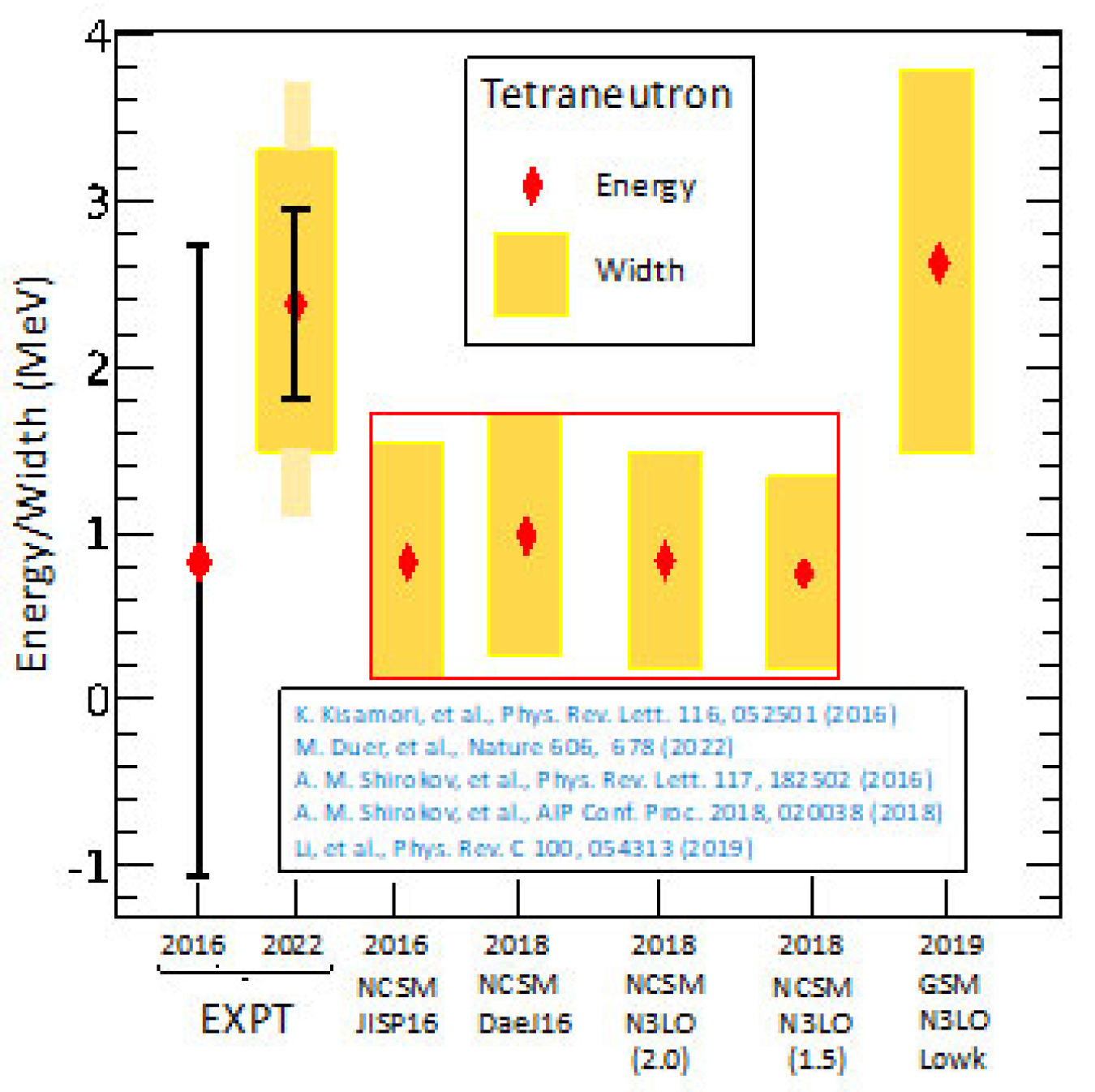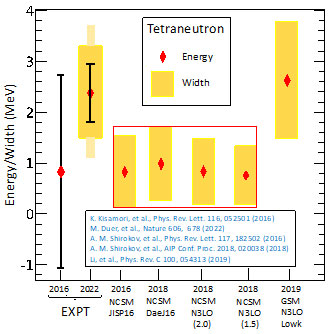
The Science
In a new experiment, scientists have finally found the long-sought tetraneutron. Predicted from theory with Department of Energy (DOE) supercomputer support at least six years ago, the tetraneutron is a combination of four neutrally charged neutrons. Unlike individual neutrons and combinations of two or three neutrons, the tetraneutron has a stable state—called a resonant state—that is long enough to be determined by the new experiment. This opens the possibility of finding additional resonant states of the tetraneutron. It may also lead to the discovery of states of systems with other numbers of neutrons. For example, nuclear theory and supercomputer analysis predict a resonant state exists in trineutrons.
The Impact
The results are an important advance for nuclear physics and understanding of the strong nuclear force. This is a key component of the current model of the basic building blocks of the universe. The results are also an important milestone for the use of supercomputers in physics. Scientists have made rapid advances in robust theoretical predictions of nuclear structure and reactions thanks to sustained investments in multi-disciplinary teams and supercomputer access. The combination has translated into progress on predictive science. Detailed differences between the experimental and theoretical tetraneutron resonance point to the need for improvements in our knowledge of the neutron-neutron and three-neutron interactions.
Summary
Nuclear theory with quantified uncertainties using a team-based approach on DOE supercomputers now has its predictive power firmly ratified by the experimental discovery of the previously theorized tetraneutron resonance. Researchers at Iowa State University and Los Alamos National Laboratory working in multi-disciplinary teams supported in part by two DOE divisions and using DOE supercomputers had independently predicted the tetraneutron resonance and the absence of a tetraneutron bound state. The new experiment reports the first discovery of the tetraneutron as a resonance with properties similar to those predicted in a 2016 paper to within theoretical and experimental uncertainties. Detailed properties of the theory predictions for the tetraneutron resonance lie within the range of the present theoretical and experimental uncertainties.
Contact
James Vary
Iowa State University
[email protected]
Funding
This work was supported in part by the Department of Energy Office of Science, Divisions of Nuclear Physics and Advanced Scientific Computing Research.
Publications
Shirokov, A.M., et al, Prediction for a four-neutron resonance. Physical Review Letters 117, 182502 (2016). [DOI: 10.1103/PhysRevLett.117.182502]
Gandolfi, S., et al., Is a Trineutron Resonance Lower in Energy than a Tetraneutron Resonance? Physical Review Letters 118, 232501 (2017). [DOI: 10.1103/PhysRevLett.118.232501]
Duer, M., et al. Observation of a correlated free four-neutron system. Nature 606, 678–682 (2022). [DOI: 10.1038/s41586-022-04827-6]
Related Links
Technical University of Darmstadt press release: Long sought-after particle consisting of four neutrons discovered
Iowa State University press release: Theoretical calculations predicted now-confirmed tetraneutron, an exotic state of matter
Scraped from https://www.sourcearu.com




